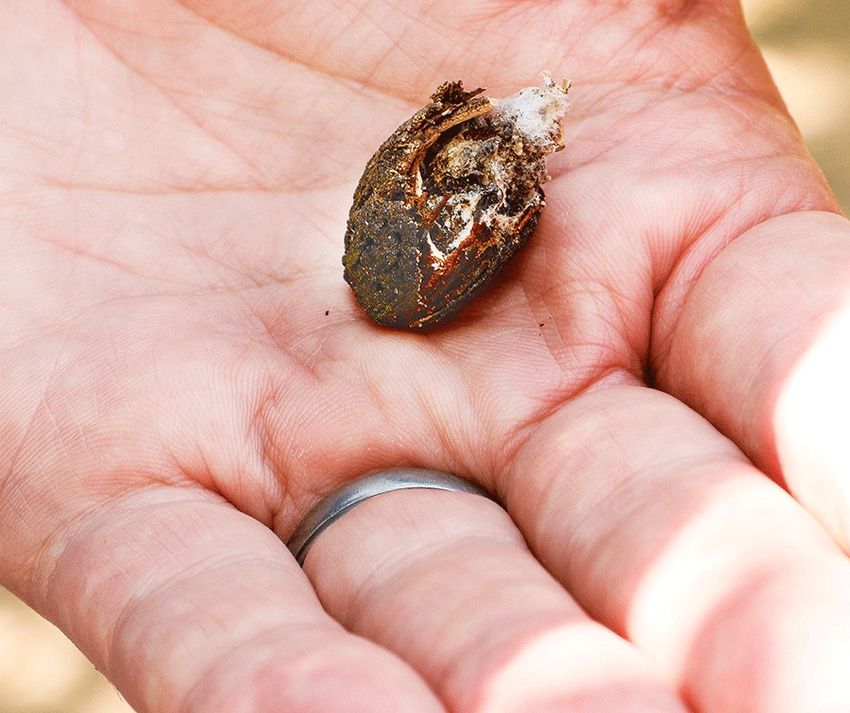
As the fight continues against the navel orangeworm (NOW) in California tree nut orchards, one researcher is suggesting growers may look at winter sanitation efforts a little differently.
Betsy Boyd, an associate professor at California’s Chico State University, is working on a new model to better gauge overwintering NOW infestation rates in orchards, with the goal of helping growers be more efficient and effective.
She is calling her model the “Infest Ratio,” which seeks to predict year-end damage by counting NOW larvae, rather than simply focusing on eliminating the mummy nuts in which they overwinter and develop.
While Boyd does not necessarily discount the elimination of mummy nuts to reduce overwintering NOW populations, and thus the likelihood of reduced nut damage the following season, research is finding that multiple NOW larvae can infest a single mummy nut, while other mummy nuts may not have a developing larvae in them. Data also suggest that NOW infestations and damage can vary significantly from year-to-year in total count and by almond variety.
ACCURATE IDENTIFICATION
“You can get multiple larvae inside one nut,” Boyd says. “So, this flight could spin off quite a few females, and that could mean a big infest rate later for the next generation.”
NOW is not just a damaging pest in almonds but can also destroy pistachios and walnuts. Boyd suggests looking closely at developing NOW larvae to accurately identify the pest and differentiate it from coddling moth. Accurate ID is necessary for management strategies, she says.
The key, she believes, is better understanding the population of NOW moths in the orchard. This means better accounting of infested mummy populations in those orchards. Boyd wants to better predict end-of-year damage by use of this ratio, or simply the number of larvae per number of mummies. The goal is to help growers be as effective and efficient as possible with winter sanitation efforts.
Degree-day timing in spray and integrated pest management activities can be off as much as a month, she says, because of an incomplete understanding of the insect.
The good news is that researchers have over a decade of data to analyze, but according to Boyd that information has yet to be put together in a useful way to better understand the insect and the idea behind the predictive model she believes can better assist growers in winter sanitation efforts.
About the Author(s)
You May Also Like






